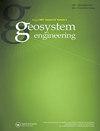Influence of calcined medium grade clay on the properties of Portland cement pastes
IF 1.1
Q3 GEOSCIENCES, MULTIDISCIPLINARY
引用次数: 0
Abstract
ABSTRACT In the recent decades, the composition of Portland cements has undergone significant changes related to an increase in the range and content of supplementary cementitious materials following development of composite and multicomposite cements. The development of these binders that meet the requirements of sustainability requires the expansion and adaptation of the mineral resource base of cement industry to the production of low-emission binders with a gradual decrease of resource and energy intensities. Efforts to find the widespread sources of pozzolans providing high reactivity and physical–chemical stability have led to intensive studies on thermally treated clays of various chemical–mineralogical composition and their industrial adoption. Due to scarcity and high cost of kaolin clays, great attention is given to medium- and low-grade clays. This article reports on a study to evaluate the effect of calcined clay with 52% of clay minerals on the properties of fresh and hardened pastes, in particular on the resistance to sodium sulfate and nitric acid attacks. The reaction products assemblage of the blended Portland cement pastes was investigated by XRD and thermal analyses. The hardened Portland cement pastes incorporated with thermally treated clay demonstrated better durability performance compared to reference ones.煅烧中等标号粘土对硅酸盐水泥浆体性能的影响
摘要近几十年来,随着复合水泥和多组分水泥的发展,硅酸盐水泥的成分发生了重大变化,这与补充胶凝材料的范围和含量的增加有关。开发这些满足可持续性要求的粘合剂需要扩大水泥行业的矿产资源基础,使其适应低排放粘合剂的生产,同时逐渐降低资源和能源强度。为了寻找具有高反应性和物理化学稳定性的火山灰的广泛来源,人们对各种化学矿物成分的热处理粘土及其工业应用进行了深入研究。由于高岭土的稀缺性和高成本,人们对中低档高岭土给予了极大的关注。本文报道了一项研究,以评估含有52%粘土矿物的煅烧粘土对新鲜和硬化浆体性能的影响,特别是对抗硫酸钠和硝酸侵蚀的影响。通过XRD和热分析研究了掺合硅酸盐水泥浆体的反应产物组合。与参考水泥浆相比,加入热处理粘土的硬化硅酸盐水泥浆具有更好的耐久性能。
本文章由计算机程序翻译,如有差异,请以英文原文为准。
求助全文
约1分钟内获得全文
求助全文

 求助内容:
求助内容: 应助结果提醒方式:
应助结果提醒方式:


